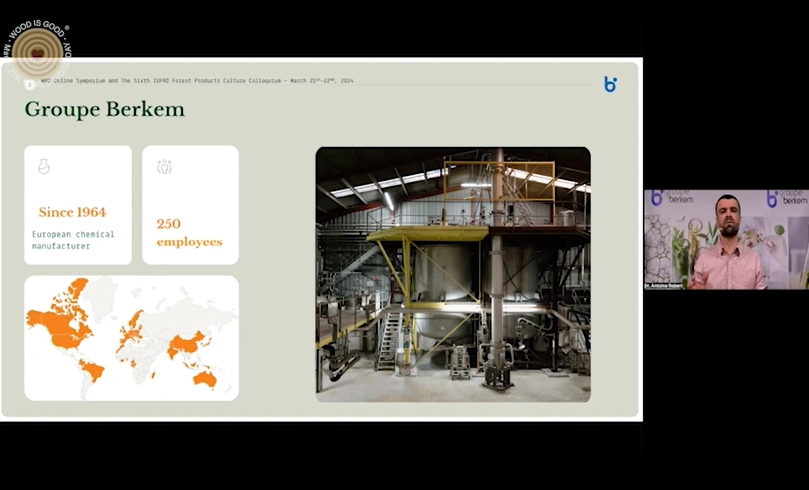会议名称:“2024世界木材日”研讨会暨第六届国际林联(IUFRO)林产品文化研究组讨论会
会议时间:2024年3月21-22日
报告嘉宾: Antoine Robert博士
嘉宾单位:法国生物化学公司GroupeBerkem
报告题目:Protection of Wooden Cultural Heritage with a Novel Wood Preservative with Vegetal Extracts–Permethrin-azole Mixture
报告摘要:
The worldwide cultural and technical heritage is made up of several materials but a considerable portion of it is partly or entirely made of wood. We can list all types of wooden buildings, other wooden structures that have cultural significance or are parts of historic places, and includes temporary, movable, and evolving structures, but also pieces such as artefacts with several components.
Their intrinsic cultural and historical value makes their preservation an absolute prerequisite. Restoration of surfaces against mold, and/or insects, termites require expertise of restorers/conservators.
An environmentally conscious society in Europe and other economically developed regions requires that wood protecting chemicals contain lesser or lower levels of synthetic actives and be supplemented instead with bio-based ingredients to enhance the bioefficacy of the treatment formulations. With expertise and knowledge in biocidal formulations, especially for wood preservation for over 60 years, Groupe Berkem patented bio-based formulations based in part on pyrethroid-azole-vegetal extracts mixture (SYNERKEM® technology with polyphenols). These solutions have already been evaluated as promising eco-friendly and cost-effective new generation wood preservatives for aboveground indoor and outdoor wood protection against termites in Malaysia.
The paper presents recent treatment experiences in Europe for the preservation of cultural heritage with the bio-based gel-emulsion XILIX® containing SYNERKEM® technology, whose higher diffusion capacity has been proven (up to 8 mm pyrethroid penetration into the wood). Eight cultural sites located in Bulgaria, Czech Republic, France, Hungary, Slovaquia and treated up to ten years ago are described including churches, cathedrals, palaces renovated into hotels, castles. Both insect and fungi damages were observed. The matrix “wood” revealed to be well protected.
Therefore, the bio-based fungicide and insecticide gel emulsion is of advantage to restoration of wood pieces with only one product. And its use in envelope treatment leads to a greener future for wooden cultural heritage protection.
责任编辑:iwcs24H


 1,045
1,045